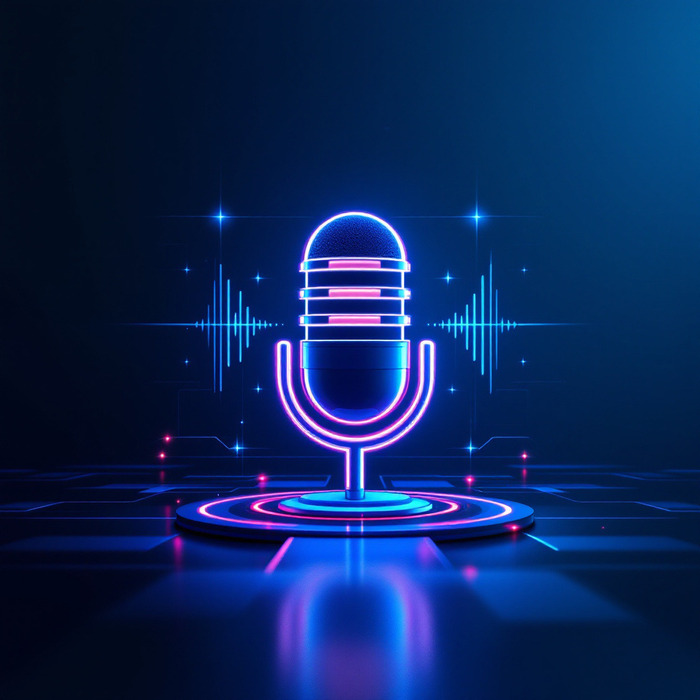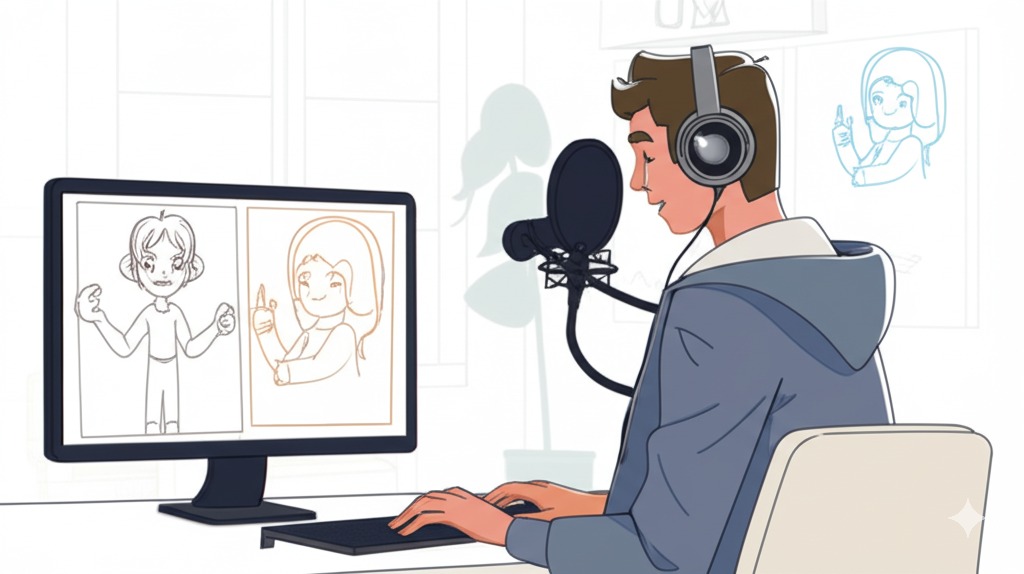
AI voices for animated short films are computer-generated voices that indie filmmakers can use instead of hiring voice actors. You input your script, pick voices for your characters, and the AI reads the lines with surprisingly natural-sounding results.
These synthetic voices can be tweaked for different emotions and speaking styles, making them perfect for animation projects where you need multiple character voices but don’t have much budget. The technology has gotten really good lately – the voices sound much more natural than the robotic computer voices from a few years ago.
Anyone who’s made an animated short knows how much work goes into it. You spend weeks or months getting the animation right, and then you hit a wall when it’s time for voices. Finding and paying voice actors is expensive, scheduling recording sessions is a headache, and you need decent equipment to get good quality.
AI voices for animated short films solve these problems in a simple way. You can create all your character voices on your computer, without booking a studio or coordinating with actors. You can try different voices until you find what fits each character, and make changes whenever you want without having to schedule new recording sessions.
The AI voices for animation sound surprisingly good these days. They’re not perfect – top professional voice actors still bring more nuance to performances – but they’re definitely good enough for many projects, especially when you’re on a tight budget or deadline. Some animated shorts using AI voices have even won awards, with viewers not realizing the voices weren’t real people.
This guide will show you exactly how to use AI voices in your animated project, from picking the right voices to fine-tuning them and syncing them perfectly with your animation.
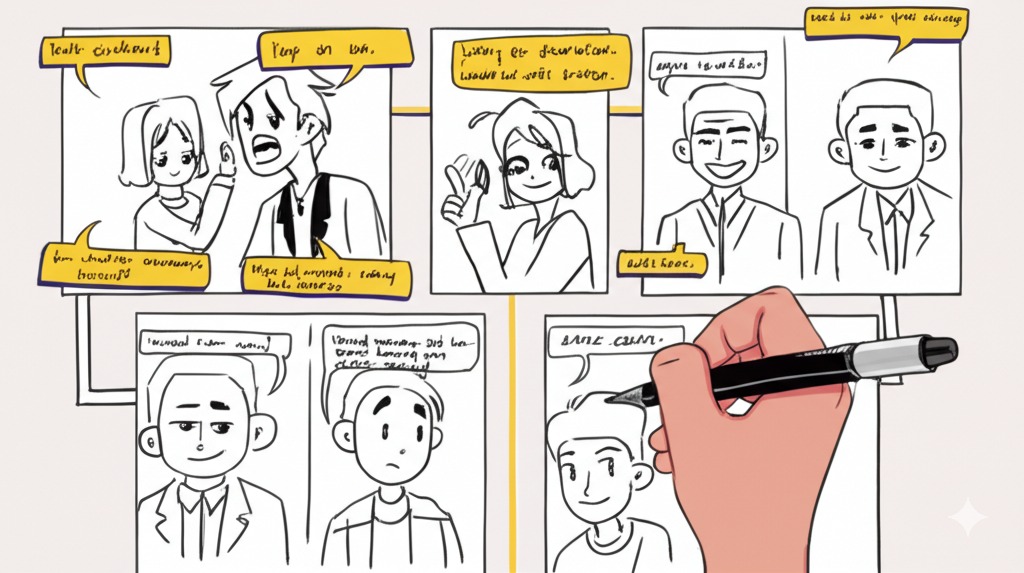
The Voice Revolution in Animation Production
Traditional voice recording for animation is full of headaches for indie creators. You need to find talented actors, pay them fairly, book studio time, direct the sessions, and often schedule pickups when something doesn’t work. All of this costs money and time that small teams just don’t have.
AI voiceover for short films changes all that. With AI voices, you can:
- Create all your character voices from your computer
- Make unlimited revisions without rebooking actors
- Work on dialogue at any hour of the day or night
- Save thousands of dollars on recording costs
- Update lines right up until final export
For a two-minute animated short with five characters, traditional voice acting might cost $1,000-3,000 or more. Using AI voices for animated short films might cost under $100, depending on the platform you choose.
Beyond the cost savings, there’s also creative freedom. Want to try a line three different ways? No problem. Need to change a joke at the last minute? Easy. This flexibility is why more indie animators are using AI voice generators for radio commercial production techniques and adapting them for animation.
How AI Voice Technology Actually Works
AI voices for animation use complex technology, but you don’t need to understand all the technical details to use them. Here’s the simple version:
These systems analyze thousands of hours of real human speech to learn patterns. They figure out how people pronounce words, where they pause, how their pitch changes for questions, and how emotions affect speech. The best systems can now mimic these natural speaking patterns pretty convincingly.
There are a few different approaches:
- Text-to-speech: You type text, and the AI reads it in a preset voice
- Voice cloning: The AI copies a specific person’s voice (with permission)
- Voice conversion: Takes one voice and transforms it into another style
For most indie animators, text-to-speech is the easiest option. You choose from a library of voices, type your script, and adjust settings like speed, pitch, and emotion.
The synthetic voiceover workflow has gotten much simpler in recent years. Most platforms now have user-friendly interfaces where you can test different voices before committing to one.
Planning Your Animation for AI Voices
Before jumping into voice creation, you need to plan your animation with AI voices in mind. Here are some tips:
- Write your script with clear character descriptions, including personality traits that will influence voice selection
- Mark emotional shifts clearly so you know where to adjust the AI’s tone
- Keep lines relatively short – AI voices handle shorter phrases better than long monologues
- Include notes about pauses, emphasis, and pacing
- Consider creating a “voice board” similar to a storyboard but for testing voice options
When writing dialogue for AI voices for animated short films, avoid tongue twisters and extremely technical terms that might trip up the system. Simple, conversational language usually works best.
It’s also smart to plan for reaction sounds – little grunts, gasps, and laughs that characters make. Some AI systems can generate these, but you might need to create a library of these sounds separately.
Real-World Success with AI Voices in Animation
Professional animation studios are increasingly using voice generation for animated films to save time and money. These technologies analyze human speech patterns to replicate intonation, pacing, and emotion, creating convincing character voices.
Some studios use voice cloning (with permission) to recreate specific actors’ voices, while others create entirely new character voices with unique personalities. This has opened up new creative possibilities in animation.
Source: Respeecher: AI Voiceovers in Film & Animation
Choosing the Right AI Voice Platform
There are loads of options for AI voices for animated short films, and the choice can be overwhelming. Here’s what to consider:
- Voice quality and naturalness
- Number of voice options and characters
- Emotion controls and expressiveness
- Price (subscription vs. pay-per-use)
- Export options and file formats
- Rights and usage terms
For beginners, user-friendly platforms like Murf.ai, Play.ht, or Wellsaid Labs are good starting points. More advanced users might explore custom solutions like Respeecher or free AI voice cloning options for specific character needs.
Test multiple platforms with the same script to compare quality. Many services offer free trials or sample voices so you can hear the difference before spending money.
Remember that pricing varies widely. Some charge monthly subscriptions, others charge per word or minute of audio. Calculate your project’s total dialogue time to estimate costs accurately.
Creating Distinct Character Voices
The best animated films have characters with instantly recognizable voices. With character voice development with AI, you can create this same level of distinction.
Start by defining each character’s traits:
- Age and gender
- Personality (shy, confident, grumpy, cheerful)
- Background (education level, regional accent)
- Physical characteristics (size, strength)
Then match these traits to voice parameters:
- Pitch (high or low)
- Speed (fast or slow speaking)
- Texture (smooth or raspy)
- Accent or regional dialect
- Energy level
Most AI voices for animated short films platforms let you adjust these settings. Make small tweaks until each character sounds unique and memorable. Try creating a “voice lineup” where you have each character say the same line, so you can easily compare them.
For example, a young, energetic character might have a higher-pitched, faster voice with lots of dynamic range. An older, wiser character might have a lower, slower voice with more measured delivery.
Once you’ve set these parameters, save them in a character voice sheet so you can maintain consistency throughout your project.
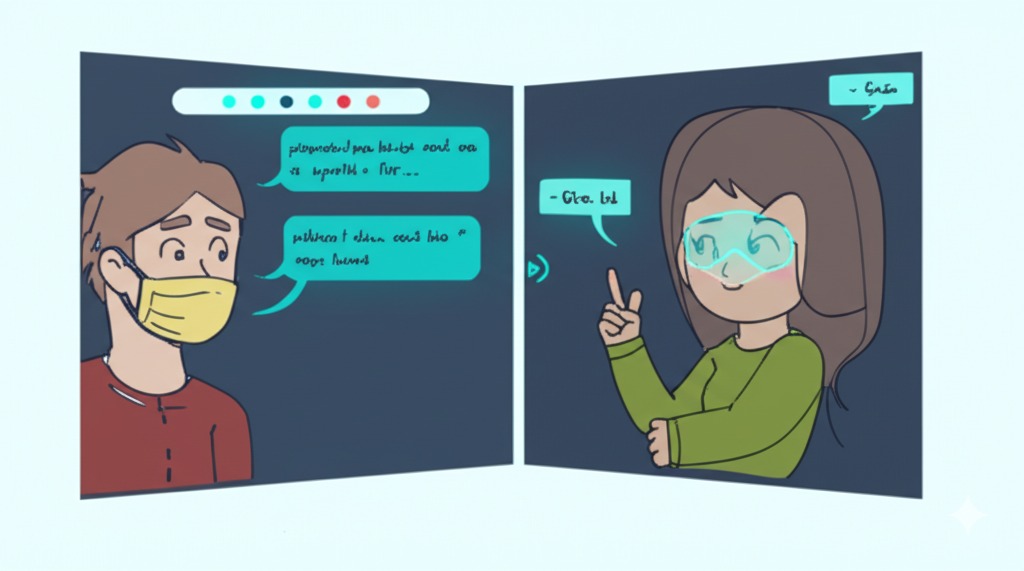
From Script to Voice: The Production Workflow
Now let’s go through the actual synthetic voiceover workflow step by step:
- Prepare your script in the format your chosen AI platform requires (usually plain text with character names)
- Select and customize voices for each character, saving presets for consistency
- Generate initial voice tracks scene by scene, keeping files organized by scene and character
- Listen carefully to the results and note any parts that need adjustment
- Regenerate problem lines with tweaked settings (different emphasis, emotion, or pacing)
- Export final voice files in a high-quality format compatible with your animation software
- Import these voice tracks into your animation timeline
- Adjust animation timing to match the voice performances
This voice generation for animated films process is iterative – you’ll likely go back and forth between steps as you fine-tune the performances.
Some platforms allow batch processing where you can generate all lines for a character at once, while others work better processing the script scene by scene. Experiment to find what works for your workflow.
Many animators find it helpful to create a rough animation first, then generate voice tracks, and finally refine the animation to match the vocal timing precisely.
Making AI Voices Sound More Natural
Out-of-the-box AI voices for animation can sometimes sound a bit flat. Here are tricks to make them more natural:
- Add breathing sounds between phrases for natural pauses
- Include “um” and “uh” occasionally for realistic hesitation
- Vary the emotion settings slightly between lines
- Break long sentences into shorter phrases with natural breaks
- Use punctuation creatively to control pacing (commas for short pauses, periods for longer ones)
- Add slight variations in volume for emphasis
For example, instead of: “I don’t know what happened to the treasure map but we should definitely look for it in the old castle on the hill.”
Try: “I don’t know what happened to the treasure map… but we should definitely look for it. In the old castle on the hill!”
The second version gives the AI more help with how to pace and emphasize the line. The pauses and breaks create a more natural-sounding delivery instead of a flat, monotone reading. Those little differences in punctuation tell the AI voice when to pause, where to put emphasis, and how to make the line sound more like a real person talking.
The second version gives the AI more guidance on how to pace and emphasize the line, creating a more dynamic performance.
After generating your voices, you can use simple audio editing software to make further adjustments. Add slight reverb for different environments, adjust timing by stretching or compressing phrases, and clean up any awkward pauses.
Post-Production Voice Enhancement
Once you’ve generated your AI voiceover for short films, some post-production work can make a big difference:
- Noise reduction to clean up any background hiss
- EQ adjustments to make voices fit the style of your animation
- Compression to even out volume levels
- Reverb to match the environment (more reverb for caves, less for outdoors)
- Layering multiple takes for crowd scenes
You don’t need fancy software for this – free tools like Audacity work fine for basic voice editing. If you want to get fancier, programs like Adobe Audition or even GarageBand can do the job.
When you’re editing AI voices, don’t go overboard with effects. Small adjustments usually sound better than dramatic ones.
One cool trick for getting better emotional expression in synthetic voices is to layer different versions of the same line. You might generate an “angry” version and a “sad” version, then blend them together to create a more complex emotional sound.
Remember that animation dialogue creation is about supporting what we see on screen. The voice should work with the character’s facial expressions and movements, not fight against them.
Budget Comparison: AI vs. Human Voice Actors
Let’s talk actual numbers for using AI voices for animated short films versus hiring human actors:
For a 5-minute short with 6 characters (about 500 words of dialogue):
Human Voice Actors:
- Casting time: 1-2 weeks
- Recording sessions: $200-500 per actor
- Studio time: $300-600
- Director/engineer: $300-500
- Pickups and retakes: $200-400
- Total: $1,800-4,500+
- Timeline: 3-6 weeks
AI voices for animation:
- Voice selection time: 1-2 days
- AI voice service: $30-150 total
- Editing time: Similar to human voices
- Revisions: No additional cost
- Total: $30-150
- Timeline: 2-5 days
The budget-friendly voice solutions for indie animations are pretty clear, but there are trade-offs. Human actors bring a special touch and nuance that AI can’t always match. For emotional scenes with lots of dialogue, real actors might be worth the extra money. For projects where money is tight or deadlines are close, AI is a solid alternative.
Many creators now use a mix of both – AI voices for background characters and real actors for main roles. This lets you spend your money on the performances that matter most while still keeping your overall budget under control.
Many creators now use a hybrid approach – AI voices for secondary characters and human actors for lead roles. This balances cost with quality for the most important performances.
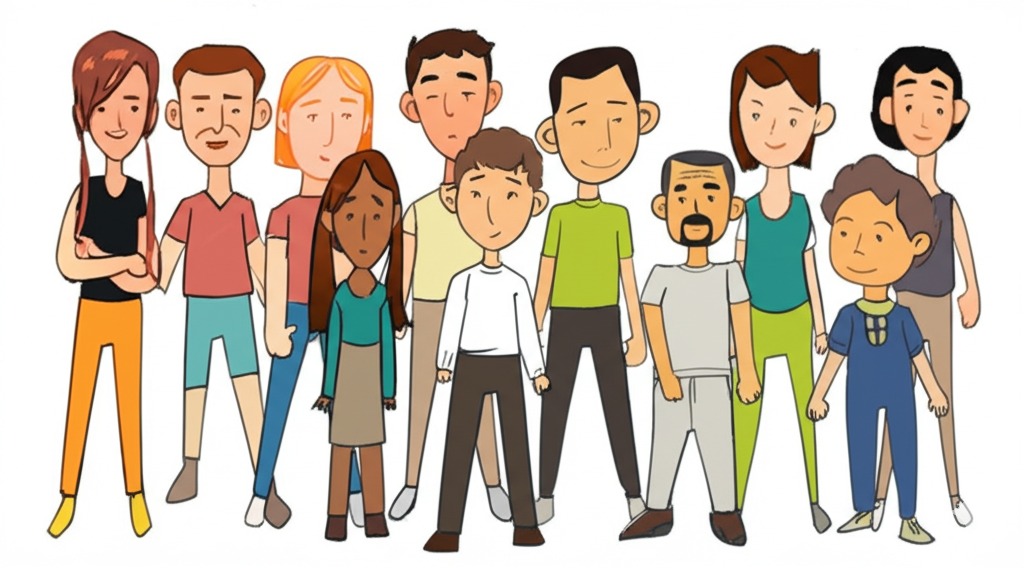
Legal and Ethical Considerations
When using AI voices for animated short films, you need to consider some important legal and ethical issues:
- Read the terms of service carefully. Some AI voice platforms restrict usage for certain types of content.
- Check the licensing terms. Some services offer unlimited use, while others charge based on views, distribution methods, or commercial usage.
- Be transparent about AI usage. If you’re submitting to festivals or competitions, many now require disclosure of AI elements.
- Credit appropriately. Even though you’re not using human voice actors, it’s good practice to credit the AI voice technology in your film.
- Consider the impact on the voice acting community. AI won’t replace skilled voice actors, but it’s changing the industry.
Most AI voice companies prohibit creating voices that impersonate celebrities or specific individuals without permission. Stick to the provided voice options or get proper clearance for voice cloning.
If you’re using AI dubbing for animation in multiple languages, check that your license covers all language versions you plan to create.
Layered Emotional Voice Architecture
A cutting-edge technique gaining popularity is Layered Emotional Voice Architecture (LEVA), which takes AI voices for animated short films to the next level.
This approach combines multiple AI voice models with different emotional settings to create more complex performances. Instead of just selecting “happy” or “sad,” you can blend emotions like:
- 60% confident + 40% concerned
- 75% excited + 25% nervous
- 50% stern + 30% sympathetic + 20% tired
By layering these emotional models, you can create performances with depth and nuance that single-emotion models can’t achieve. This is especially useful for pivotal scenes where characters experience mixed emotions.
The technique requires more technical work – typically generating multiple versions of the same line with different emotional settings, then mixing them in audio software. But the results can be remarkably more human and emotionally resonant.
This approach is particularly helpful for how to create consistent character voices with AI throughout a film, as you can document your specific emotional blends for each character’s personality.
Future of AI Voices in Animation
AI voices for animated short films are evolving rapidly. Here’s what’s coming soon:
- Real-time voice generation that adjusts to animation timing automatically
- More convincing emotional range and subtle expressions
- Better handling of singing and musical performances
- Improved integration with animation software
- More diverse voice options and accents
As these technologies improve, the line between AI and human performances will continue to blur. Some experimental systems can already learn from direction – you can tell them to be “more excited” or “slower” just like you would direct a human actor.
For indie creators, this means more accessible tools for bringing your characters to life. The gap between big studio productions and independent work is narrowing, at least in terms of voice quality.
Future animation production voice technology will likely focus on better integration with other creative tools. Imagine AI voices that automatically sync with your character rigs, adjusting timing and emotion based on the animation.
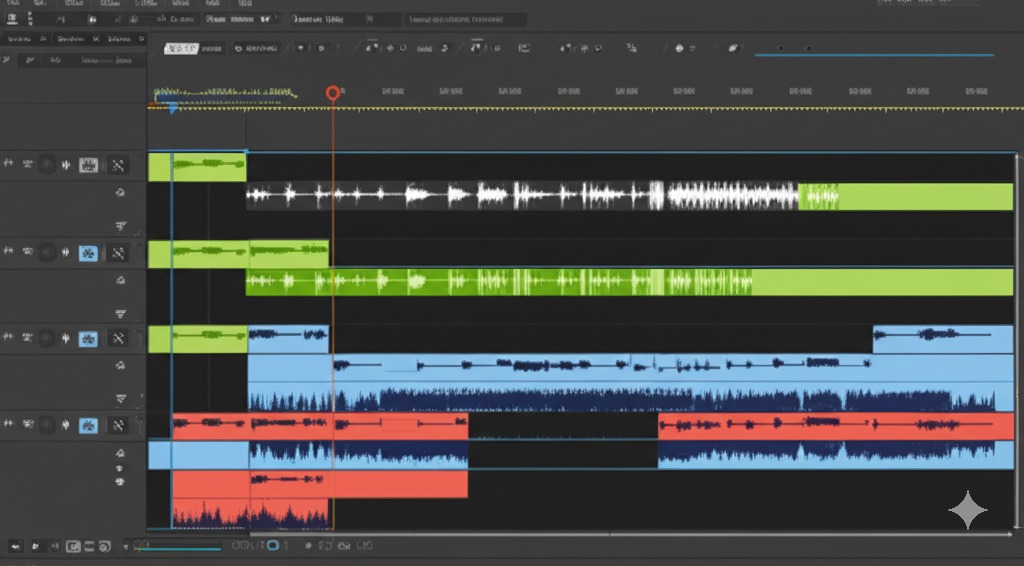
Synchronizing Voices with Animation
One challenge with AI voices for animated short films is matching them perfectly with your character animation. Here are some practical tips:
- Generate voice tracks before finalizing animation timing
- Use waveforms in your animation software to identify key sounds
- Mark mouth positions for important syllables
- Adjust animation timing to match natural pauses in the voice
- For lip sync, focus on major mouth positions rather than every sound
Synchronizing AI voice performances with animation takes practice, but the process is similar to working with human voice recordings. The advantage is that if something doesn’t work, you can regenerate the line with different timing rather than trying to stretch or compress a human recording.
For detailed lip sync, software like Papagayo can analyze voice files and generate mouth position charts, which work just as well with AI voices as with human recordings.
Remember that perfect sync isn’t always necessary – many successful animations use stylized approaches where mouths simply open and close in rhythm with speech rather than matching every sound.
Frequently Asked Questions
How close can AI voices come to professional voice acting?
The gap is closing fast. For standard dialogue, modern AI voices for animated short films can be quite convincing. For highly emotional scenes or singing, professional actors still have an edge. Many viewers won’t notice the difference in casual viewing, especially for simpler characters.
What are the typical cost savings with AI voices?
Most indie projects save 80-95% on voice production costs. A short film that might cost $2,000-5,000 for professional voice actors can often be done for under $200 with AI voices, depending on the service you choose.
How do audiences react to AI-generated voices?
Most viewers accept them readily if the voices fit the characters well. Animation already creates a stylized world, so slightly synthetic voices often feel appropriate. In blind tests, audiences frequently can’t tell which voices are AI and which are human in modern productions.
What are the current limitations in emotional expression?
Emotional expression in synthetic voices has improved dramatically but still struggles with subtle shifts within a line or very intense emotions like sobbing while speaking. The LEVA technique mentioned earlier helps address this by blending emotional models.
How should credits acknowledge AI voice generation?
Standard practice is to credit both the AI platform used and the specific voice models by name (if provided). For example: “Character voices generated using [Platform Name]” or “Voice synthesis by [Company].”
Conclusion
AI voices for animated short films have opened up new possibilities for indie creators. They make professional-sounding voice tracks accessible to those without big budgets or industry connections. While they won’t replace the unique talents of voice actors for every project, they provide a valuable option for many animation productions.
As you start using this technology, remember that the voice is just one element of your character. Strong writing, expressive animation, and good sound design all contribute to bringing your characters to life.
The best approach is often to start simple, experiment freely, and find the workflow that works for your specific project. With the right planning and attention to detail, AI voiceover for short films can help you complete your animation with professional-quality voices that serve your story and delight your audience.

